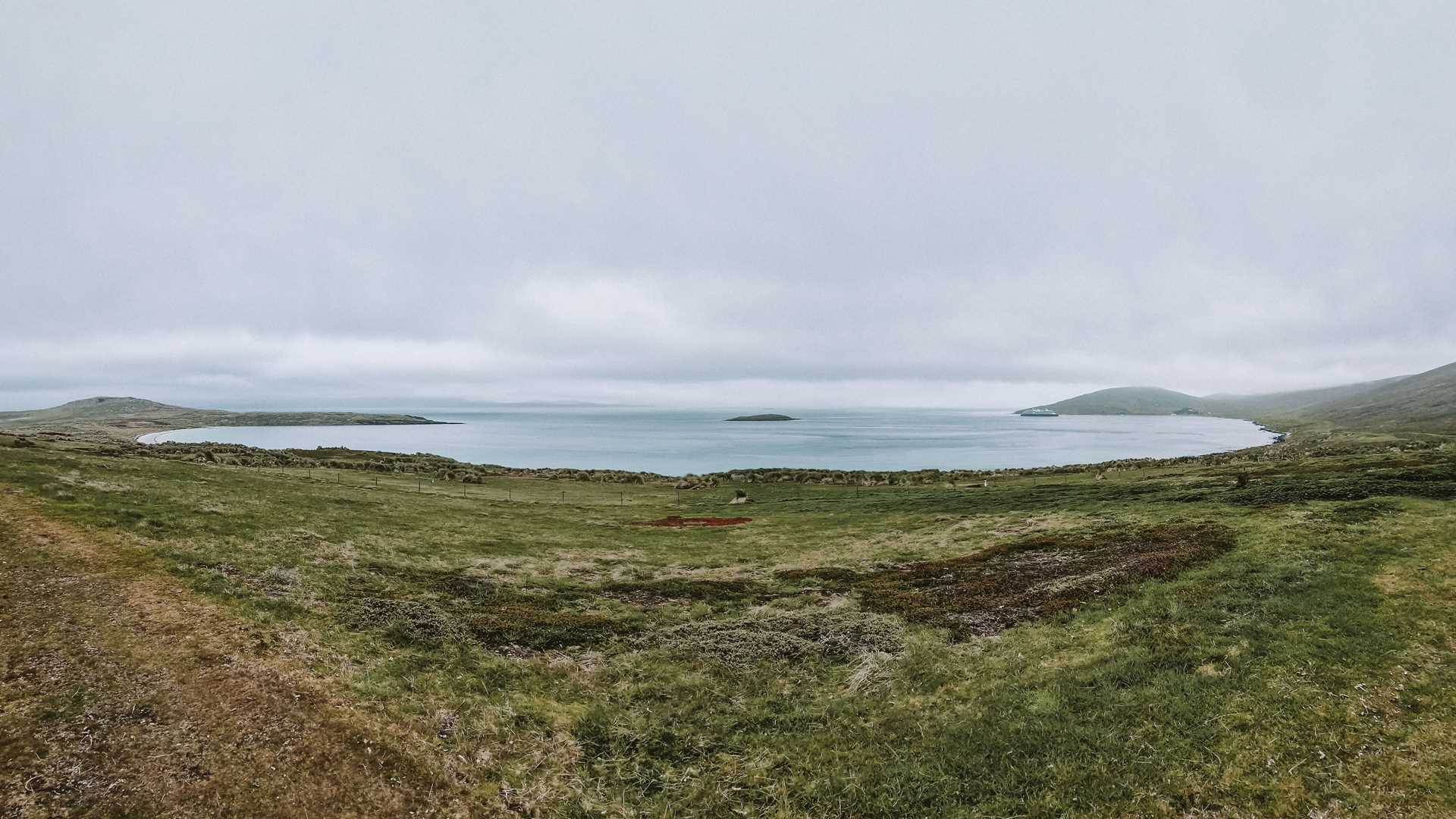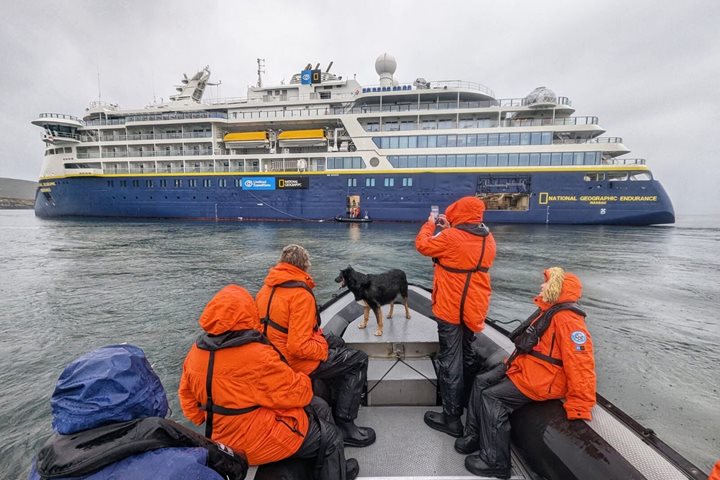They say time flies by quickly when you’re having a good time, and that is exactly what has happened on National Geographic Endurance. We’ve almost reached the end of our fantastic voyage. Today is our last day to go ashore before we head back out to sea, back to where it all began in Ushuaia, Argentina.
We had the opportunity to explore the natural wonders of the Falkland Islands one last time, and the stunning wildlife did not disappoint. We started the day on Carcass Island, where we hiked toward a historic settlement founded in 1872. Along the way, we met a wide variety of endemic birds. These sightings gave us the chance to put into action everything we learned from our photographers. We captured the most stunning images of Cobb’s and grass wrens, as well as long-tailed meadowlarks, Magellanic oystercatchers, and Magellanic snipes.
In the afternoon, we explored Grave Cove. Located at the northwesternmost point of West Falkland, this narrow bay is home to the largest gentoo penguin colony in the Falkland Islands. Lucky for us, the eggs have already hatched, and adorable, fluffy penguin chicks peeked their heads up from under their parents’ brood pouches. We were all left with heart-warming feelings of happiness and joy as we headed back to the ship.
National Geographic Endurance is now slowly disappearing in the thick mist, leaving the Falkland Islands behind her, and giving us a moment to reflect on all that we’ve seen on this epic journey to some of the most remote areas of our world, from the frozen continent of Antarctica to South Georgia and the Falkland Islands. For some of us, including myself, it was the first time we have ventured this far south, and the voyage left all of us with a deep, awe-inspiring impression of this magnificent yet fragile world.







